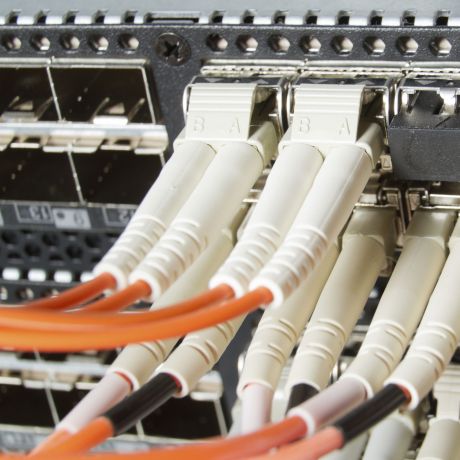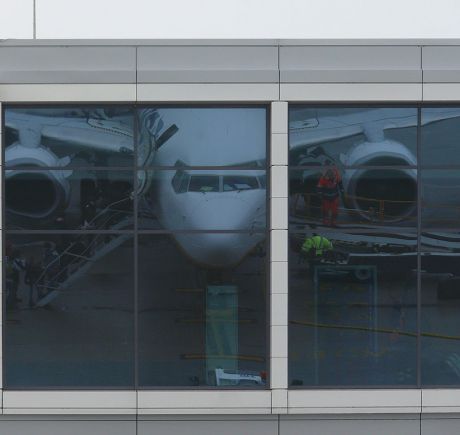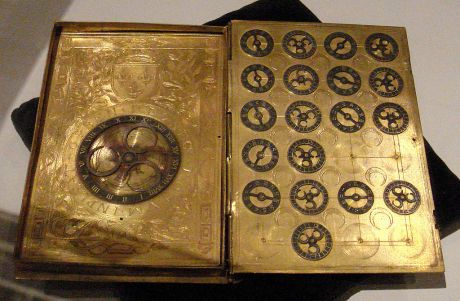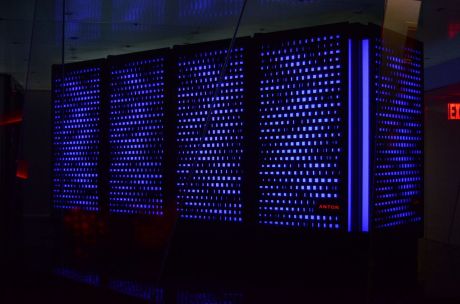Researchers achieve world-first data transmission capacity for 5G and next-generation networks.
A new prototype allows motor sport fans to personalise their TV viewing experience with synchronised content on their mobile devices.
Three EU initiatives take on the challenge of creating secure and smart technology – the backbone of a more reliable and connected world.
Researchers have shown that city size is a significant factor in determining migration patterns.
The first 5G testbeds have been launched in two European cities, allowing industries and smart city start-ups to test 5G applications citywide.
By implementing a next-generation network trial in Catalonia, the era of affordable internet for everybody is one step closer to becoming a reality.
A novel software framework will help developers better design integrated mechanisms of computation, networking and physical processes.
Efficiency in nature’s biomolecular processes, such as photosynthesis, is not wholly explained by conventional theory. The EU-funded PAPETS project explored quantum effects to better understand these processes, recently leading to further insights into the possibilities for quantum computation.
As malicious hackers find ever more sophisticated ways to launch attacks, China is about to launch the Jinan Project, the world’s first unhackable computer network, and a major milestone in the development of quantum technology.
Around the world users were locked out of their computers as they fell prey to ransomware demanding they pay up or lose their data – 200 000 were hit on Friday 12 May 2017 alone.
Cloud computing, multimedia web applications and the Internet-of-Things are driving unprecedented global data traffic. The bandwidth requirements imposed by these applications are expected to double network traffic in data centres within five years, so work is being carried out by EU-supported projects to look at ways to ease the pressure.
New Open Source technology called SwellRT has received a strong boost that will make it substantially easier and safer for developers to produce new applications and online services.
By integrating energy management systems the EU funded BESOS project contributes to the efficiency and sustainability of ‘smart cities’, while further empowering citizens to make informed choices.
The three-year DYMASOS project has tackled the management of systems of systems - how independent technologies can be harnessed to work together to optimise overall outcomes. With the development of the ‘Internet of Things’, the ability to do this is becoming even more important.
With the use of affordable, low-tech femtocells, the EU-funded TUCAN3G project is bringing 3G connection to the otherwise unconnected regions of the world.
Netflix is the undisputed champion of Internet video providers but has never actually had to build its own datacentres. So it hardly comes as a surprise to see engineers across the world craving to find out how the company can withstand such traffic whilst avoiding video stalling during playback. The ENDEAVOUR project team has made this dream come true by finding out how these servers work - and from where.
The REPARA project has developed and registered new technologies that are expected to make parallel computing applications more energy efficient, less expensive, and easier to develop and maintain.

Optimal control is a mathematical tool that can be applied to many fields, such as avionics by optimising rocket trajectories, the automotive industry by minimising collision impact, and telecoms to establish a satellite optimal position. An EU initiative provided theoretical and practical training in this field to young mathematicians and engineers.

An EU team developed ways to exploit the wasted capacity in optical fibre networks. Testing of an indoor combined radio/optical system demonstrated speeds up to 5.0 Gb/s.

Silicon photonics is an ideal platform for building intelligent transceivers for high-speed fibre optic links. However, lack of suitable light sources close to the chip is the main bottleneck holding back the technology from truly transforming the landscape of telecommunications networks.

An EU team has helped to improve computer recognition of human speech. The work involved introducing to computers large amounts of source materials in a pre-structured format, combined with new algorithms allowing auto-structuring.

A new generation of expert young researchers in glass and ceramic composites for high-technology applications will ensure a great future for the EU.

Protecting online transactions against hackers often involves a loss of user friendliness. An EU initiative uncovered novel ways to strike a balance between privacy and utility.

More and more geospatial information is becoming integrated into the internet in what has become known as the GeoWeb. An EU initiative helped pave the way to GeoWeb 2.0.

Supercomputers are powerful research tools, but access to these high-performance machines is not open to everyone in the scientific community. An EU initiative provided hundreds of researchers with access to the latest state-of-the-art supercomputing facilities.






